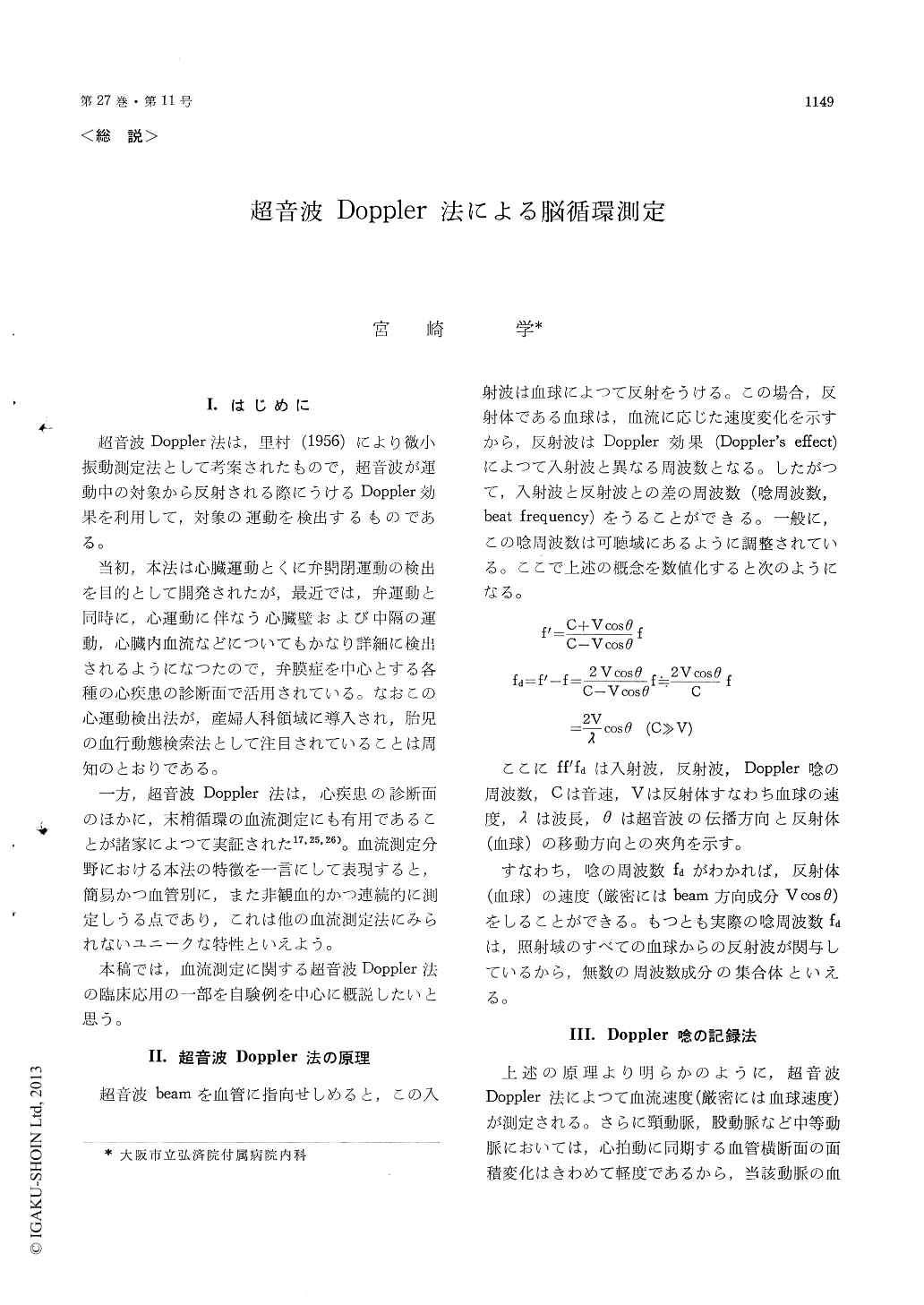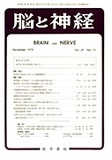Japanese
English
- 有料閲覧
- Abstract 文献概要
- 1ページ目 Look Inside
I.はじめに
超音波Doppler法は,里村(1956)により微小振動測定法として考案されたもので,超音波が運動中の対象から反射される際にうけるDoppler効果を利用して,対象の運動を検出するものである。
当初,本法は心臓運動とくに弁開閉運動の検出を目的として開発されたが,最近では,弁運動と同時に,心運動に伴なう心臓壁および中隔の運動,心臓内血流などについてもかなり詳細に検出されるようになつたので,弁膜症を中心とする各種の心疾患の診断面で活用されている。なおこの心運動検出法が,産婦人科領域に導入され,胎児の血行動態検索法として注目されていることは周知のとおりである。
一方,超音波Doppler法は,心疾患の診断面のほかに,末梢循環の血流測定にも有用であることが諸家によつて実証された17,25,26)。血流測定分野における本法の特徴を一言にして表現すると,簡易かつ血管別に,また非観血的かつ連続的に測定しうる点であり,これは他の血流測定法にみられないユニークな特性といえよう。
本稿では,血流測定に関する超音波Doppler法の臨床応用の一部を自験例を中心に概説したいと思う。
The ultrasonic Doppler technique is advantage-ous as compared with other technique for themeasurement of cerebral circulation in man. Thehemodynamic changes of cerebral circulation withvarious circulatory agents can be detected instantane-ously and noninvasively by this technique. Inaddition, it is possible to measure blood flow in-dividually in each vessel, i. e., internal, externaland common carotid arteries and internal and exter-nal jugular veins.
The present author has devised an on-line methodof measurement of blood flow by which multipleand simultaneous measurement of blood flow changeis possible, and pressure-velocity hysteresis (impe-dance) measurement by which the change of vascu-lar resistance and blood flow is measurable.
The principle and method (off-line, on-line andimpedance techniques) as well as the clinical appli-cation of the techniques are presented with theadministration of aminophylline and papaverine.
Further, the types of recordings of the Dopplerbeat and the directional Doppler flowmeter arediscussed.

Copyright © 1975, Igaku-Shoin Ltd. All rights reserved.


